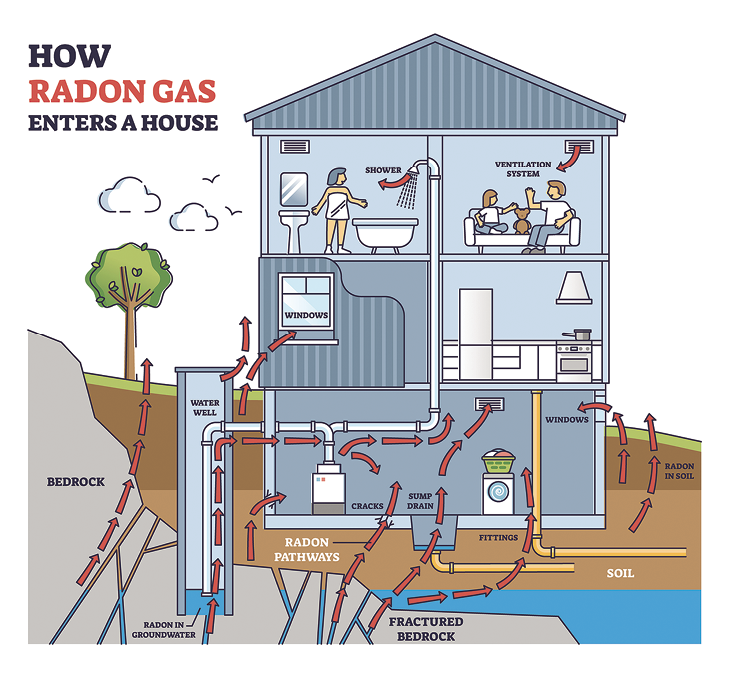If we are fortunate, our homes are safe places to which we can retreat, rest, recharge and share that comfort with the people we care about. Too often though, our homes have hazards that put our well-being at risk. Uncovering these hidden hazards saves time and money, and protects everyone that lives in or visits that house.
Slipping, Tripping and Falling—Anyone can take a tumble, but older people are especially at risk. Every year, people 65 years of age and older make more than 3 million trips to emergency rooms because of injuries related to falls.
Getting Zapped—Make sure that you have GFCI (ground-fault circuit interrupter) outlets in your kitchen and bath. They’re the ones with reset buttons, and they stop the flow of electricity if they detect variations in normal current. Be on the lookout for signs of hidden electrical problems, and call an electrician if you discover any.
Getting Clobbered—Heavy furniture tipping over sends almost 20,000 people a year to the ER. Use anti-tip kits to anchor furniture and mount TVs to the studs in the walls, not drywall anchors or toggles.
Soggy Situations—Leaky pipes behind walls can be causing damage long before you notice it. Blistering paint, warped walls, damaged wallpaper, cracked or buckling floor, loose tiles, and mold or mildew are signs you should call a plumber.
Keeping Warm—Here in the Northland, keeping warm is a priority for much of the year, and we’ve got multiple options for that.
Space heaters can take the chill off, but nearly 1,700 house fires are caused by them every year. Never leave one unattended or near flammable materials.
Anything that uses combustion to produce heat (fireplaces, wood stoves, boilers, furnaces, or portable gas heaters) produces Carbon Monoxide (CO)—a colorless, odorless and tasteless gas. Inhaling it can lead to CO poisoning—meaning that CO has built up in the bloodstream, replacing oxygen. This can lead to tissue damage or even death.
Fireplaces and woodstoves can be the ultimate in coziness, but unseen creosote buildup can lead to chimney and house fires.
Operating out of sight and often out of mind, boilers and furnaces can have unnoticed problems too. Check for a yellow or jumpy pilot light, and watch especially for cracked, rusting, and/or leaking flue pipes.
Protect yourself and your family from hidden heating dangers by installing CO detectors and having your heating system checked and cleaned by a professional at least once a season.
Revealing Radon
Radon is an invisible, odorless gas that drifts up from the soil. It’s produced when naturally-occurring uranium and radium break down. Differences in the air pressure between the home’s interior and the underlying soil can pull the radon up and inside the building, where it can then accumulate. Unfortunately, two in five homes in Minnesota have high radon levels, and our cold weather necessitates that buildings be closed for much of the year. This increases radon exposure for the people inside.
Radon Health Risks—Radon is the number-one cause of lung cancer in non-smokers, and the second most common cause of lung cancer in smokers. About 20,000 deaths a year are caused by breathing radon. The longer someone is exposed to radon, the greater the risk of cancer, and the combined risk of smoking and radon exposure is even higher.
Revealing Radon—The Minnesota Department of Health recommends that all homes be tested for radon. The Cook County Environmental Health Department provides free short-term radon tests. Stop by and pick one up.
Mitigating Radon Exposure—Radon concentrations inside a building can be reduced by mitigation systems. Sealing cracks and installing a fan and pipe that vents the gas above the edge of the roof, away from windows, are two possible interventions. Licensed radon mitigation specialists can help you determine which system would work best with your foundation type.
This is a condensed version of the Sawtooth Mountain Clinic’s “Topic of the Month” newsletter. Want to learn more? Visit sawtoothmountainclinic.org to read the full issue, listen to the audio version, access the resources cited, and explore our entire library of newsletters.






